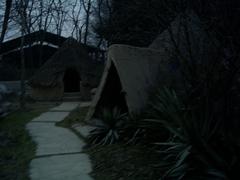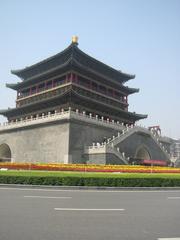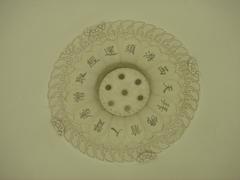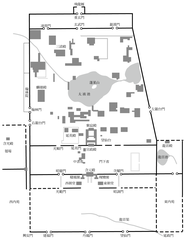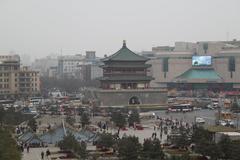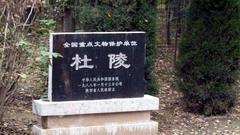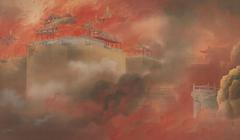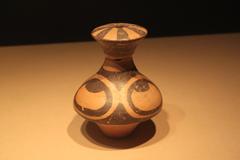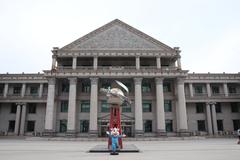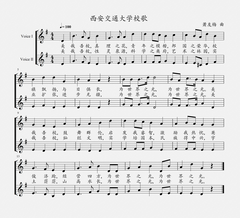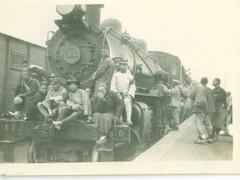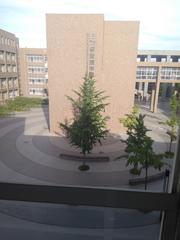
Imperial Tombs of the Western Han Dynasty Xi’an: Visiting Hours, Tickets, and Historical Sites Guide
Date: 04/07/2025
Introduction
Nestled on the historic plains surrounding Xi’an, the imperial tombs of the Western Han Dynasty (206 BCE–9 CE) rise as monumental testaments to early imperial China’s political power, architectural ingenuity, and evolving funerary traditions. Often referred to as the “Xi’an Pyramids,” these mausoleums—including the Maoling Mausoleum of Emperor Wu, the Han Yangling Mausoleum of Emperor Jing, and the Changling Tomb of Liu Bang—reflect the dynasty’s complex social hierarchy, cosmological beliefs, and the city’s prominence as a Silk Road hub.
Visitors today can walk through extensive necropolises that recreate the imperial court in miniature, with grand earth mounds, symmetrical layouts, processional avenues, ritual temples, and richly furnished burial pits. Museums and interactive exhibitions offer immersive experiences, displaying thousands of terracotta figurines, intricate jade artifacts, and precious burial goods. This guide provides comprehensive information on visiting hours, ticket options, accessibility, transportation, nearby attractions, and special events, making it an essential resource for anyone planning to explore the legacy of the Western Han emperors.
For further historical context and visitor information, see Chiculture, China Tripedia, and Sixth Tone.
Table of Contents
- Historical Context of the Western Han Dynasty Mausoleums
- Architectural Features and Layout
- Key Mausoleum Complexes
- Visiting Information
- Guided Tours and Special Events
- Nearby Attractions
- Visitor Experience Enhancements
- Cultural Significance and Archaeological Discoveries
- Frequently Asked Questions (FAQ)
- Plan Your Visit and Stay Connected
Historical Context of the Western Han Dynasty Mausoleums
The Western Han Dynasty emerged as a powerful force in Chinese history, consolidating imperial rule and fostering cultural and economic growth. Xi’an (then Chang’an), the capital, became a cosmopolitan center and starting point of the Silk Road. Han emperors constructed grand mausoleums outside the city, each designed to reflect their authority and beliefs about the afterlife, as well as the sophisticated hierarchy that defined Han society. These necropolises not only served as eternal palaces for the emperors and their consorts but also as enduring symbols of their reign (Xi’an: The Starting Point of the Silk Road).
Architectural Features and Layout
Central Tomb Mounds
At the heart of each mausoleum is a massive, truncated pyramid-shaped earth mound—often over 30 meters high and up to 222 meters on each side. These mounds are constructed using rammed earth techniques for lasting durability.
Symmetry and Hierarchy
The mausoleums are arranged with strict symmetry, mirroring the imperial court: the emperor’s tomb lies at the center, flanked by the empress’s tomb, satellite tombs for royal family and high officials, and an array of burial pits.
Processional Roads and Ritual Structures
Wide processional avenues, or spirit paths (shendao), lined with stone stelae and statues, lead to the tomb entrances. Ritual structures such as ancestral temples, ceremonial platforms, and cardinally-aligned gates further reinforce the dynastic order.
Burial Pits and Artifacts
Surrounding the central mounds are dozens of burial pits containing terracotta warriors, court figurines, chariots, animals, and daily-use objects. These artifacts offer insight into Han society, military organization, and beliefs about the afterlife. The Han Yangling Mausoleum alone contains more than 80 satellite tombs and over 50,000 miniature terracotta figurines (Hanyangling Museum).
Key Mausoleum Complexes
Maoling Mausoleum (Tomb of Emperor Wu)
The largest and most prominent Han tomb, Maoling features a grand mound, ritual sites, and accompanying tombs of generals and consorts. The adjacent Maoling Museum displays significant archaeological finds.
Han Yangling Mausoleum (Tomb of Emperor Jingdi)
Renowned for its innovative burial pits and underground museum, Han Yangling showcases thousands of miniature terracotta figures and a glass walkway over excavated relics (Chinaxiantour.com).
Changling Mausoleum (Tomb of Liu Bang)
The tomb of the Han Dynasty’s founder, notable for its rectangular mound and the arrangement of accompanying tombs.
Visiting Information
Visiting Hours
- Most Sites: 8:00/8:30 AM – 5:30/6:00 PM (last entry 60–90 minutes before closing; hours may vary by season and site).
- Han Yangling Mausoleum:
- March–November: 8:30 AM – 6:30 PM (last ticket at 5:00 PM)
- December–February: 8:30 AM – 6:00 PM (last ticket at 4:30 PM)
Ticket Prices and Discounts
- Maoling Mausoleum: ~60 CNY for adults, with discounts for students and seniors.
- Han Yangling Mausoleum: 70 CNY (March–November); 55 CNY (December–February); includes museum access.
- Combo tickets and guided tour packages are available and may offer savings.
Accessibility and Facilities
- Most sites have paved paths and ramps, though some areas involve uneven terrain or stairs.
- Wheelchair access and basic facilities (restrooms, cafes, souvenir shops) are available at major museums.
- Wear comfortable shoes and bring water, especially in warmer months.
Getting There
- Mausoleums are 30–50 km north of Xi’an. Options include:
- Taxi or ride-sharing (1–1.5 hours from city center)
- Public buses (routes may require transfers)
- Metro Line 2 to Honghui Yiyuan Beiqu Station (for Han Yangling), then taxi (~15 minutes)
- Organized tours with transportation
Guided Tours and Special Events
- Guided tours (Chinese/English) are available at major sites and recommended for historical context.
- Audio guides and multilingual brochures enhance self-guided visits.
- Special events: Han Dynasty cultural festivals, artifact exhibitions, and seasonal activities (e.g., autumn ginkgo forest at Han Yangling) are held throughout the year.
Nearby Attractions
Enhance your trip by exploring:
These sites complement the Han tombs and provide a broader perspective of Xi’an’s historical legacy.
Visitor Experience Enhancements
Museums and Exhibition Halls
- Han Yangling Museum: Features glass walkways over excavation pits, interactive displays, and English-language materials.
- Maoling Museum: Houses rare artifacts from Maoling and related tombs.
Multimedia and Virtual Tours
- Official museum websites and travel apps offer virtual tours, interactive maps, and high-resolution images (with alt text for accessibility).
Cultural Significance and Archaeological Discoveries
The Western Han tombs are more than burial sites—they embody the dynasty’s ideology, cosmology, and artistry. Their design reflects the belief in cosmic harmony and the emperor’s eternal legacy. Archaeological finds include:
- Jade burial suits and bi-discs, symbolizing immortality.
- Bronze and lacquerware vessels demonstrating technical mastery.
- Central Asian glassware and imported goods, evidence of Silk Road exchanges.
- Inscriptions and documents revealing Han governance and daily life.
Frequently Asked Questions (FAQ)
Q: Are the mausoleums suitable for children?
A: Yes, especially the museums and open-air areas. Some underground sections may have restrictions.
Q: Is photography allowed?
A: Usually outdoors and in museums without flash. Restrictions may apply in some exhibition halls.
Q: Are English-speaking guides available?
A: Yes, at major sites and through tour agencies.
Q: Are the sites wheelchair accessible?
A: Main museums and paths are accessible, but advance inquiry is recommended for specific needs.
Q: When is the best time to visit?
A: Spring and autumn for mild weather; late October–November for the ginkgo forest at Han Yangling.
Q: Can I buy tickets online?
A: Online booking is available for most major sites; otherwise, tickets can be purchased on-site.
Plan Your Visit and Stay Connected
Exploring the Western Han imperial tombs offers a deep dive into China’s ancient world. To make the most of your visit:
- Download the Audiala app for updated hours, digital guides, and virtual tours.
- Follow us on social media for news, tips, and exclusive offers.
- Check official museum websites for seasonal events and ticketing updates.
References and Further Reading
- Chiculture
- China Tripedia
- Sixth Tone
- The Hanyangling Mausoleum of Emperor Jing - Chinaxiantour.com
- Hanyangling Museum
- Xi’an: The Starting Point of the Silk Road
- UNESCO Silk Roads World Heritage
Visuals and Interactive Elements
- Images of Han Yangling Mausoleum’s terracotta figurines (alt: “Miniature Han terracotta figures in glass walkway pit”)
- Map of Western Han tombs with labeled key sites
- QR code for official virtual tours (where available)
Final Visitor Tips
- Allocate at least half a day to fully explore major mausoleum complexes.
- Combine your visit with other Xi’an heritage sites for a richer historical experience.
- Use digital resources for guided commentary and up-to-date visitor information.
By visiting the Western Han tombs, you engage with a living heritage that bridges China’s ancient and modern worlds—a journey made more rewarding with thoughtful planning and curiosity.

